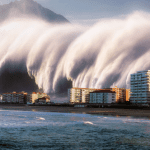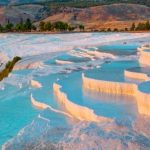 Our World
Our World  Our World
Our World  Weird Stuff
Weird Stuff 10 Cool and Creepy Facts about the Nottingham Caves
 Weird Stuff
Weird Stuff 10 Strange Things Found Inside Other Things
 The Arts
The Arts 10 Extremely Strange Designs of Common Musical Instruments
 Crime
Crime 10 Jaw-Dropping Prison Escapes Involving Helicopters
 Technology
Technology Using 10 Well-Known Technologies in the Most Unusual Ways
 Miscellaneous
Miscellaneous 10 Badly Damaged Trademarks That May Never Recover
 Books
Books 10 Famous Poisoned Pen Biographies
 History
History 10 of the Most Unusual Deaths Ever Recorded in History
 Humans
Humans 10 Amazing Origins of Human Body Parts
 Our World
Our World 10 Natural Phenomena That Challenge Our Understanding of Earth
 Weird Stuff
Weird Stuff 10 Cool and Creepy Facts about the Nottingham Caves
 Weird Stuff
Weird Stuff 10 Strange Things Found Inside Other Things
Who's Behind Listverse?

Jamie Frater
Head Editor
Jamie founded Listverse due to an insatiable desire to share fascinating, obscure, and bizarre facts. He has been a guest speaker on numerous national radio and television stations and is a five time published author.
More About Us The Arts
The Arts 10 Extremely Strange Designs of Common Musical Instruments
 Crime
Crime 10 Jaw-Dropping Prison Escapes Involving Helicopters
 Technology
Technology Using 10 Well-Known Technologies in the Most Unusual Ways
 Miscellaneous
Miscellaneous 10 Badly Damaged Trademarks That May Never Recover
 Books
Books 10 Famous Poisoned Pen Biographies
 History
History 10 of the Most Unusual Deaths Ever Recorded in History
 Humans
Humans 10 Amazing Origins of Human Body Parts
10 Natural Phenomena That Challenge Our Understanding of Earth
Our planet Earth is a tapestry woven with the threads of the mundane and the mystical, the understood and the unfathomable. It is a world where the bizarre and the beautiful coexist, inviting curiosity and wonder in equal measure. Yet, among its myriad mysteries, certain natural phenomena stand out, not just for their awe-inspiring beauty but for the way they challenge the very foundations of our understanding. This list delves into these enigmas, presenting a collection of extraordinary occurrences that defy simple explanations.
Join us as we traverse this globe, uncovering phenomena that remind us of the endless wonder of our world. Through deserts that sing and oceans that glow, we are reminded of the humility required when standing before the vast, inexplicable beauty of nature. These phenomena, challenging our understanding and pushing the boundaries of science, serve as a testament to Earth’s eternal mystery.
Related: 10 Driest Places on Earth
10 Sailing Stones of Death Valley
In the heart of California’s Death Valley lies one of nature’s most puzzling spectacles: the sailing stones. These rocks, some weighing up to several hundred pounds, mysteriously traverse the flat surface of the Racetrack Playa, leaving long, meandering tracks etched in the earth behind them. The phenomenon occurs without any direct human or animal intervention, sparking curiosity and a myriad of theories about the forces at play.
For decades, scientists and observers speculated on the origins of this phenomenon, proposing everything from strong winds and perfect weather conditions to more esoteric explanations. It wasn’t until recently that research involving time-lapse photography and environmental monitoring shed light on the stones’ enigmatic journey. The process is a delicate interplay between the playa’s wet conditions and the strong winds characteristic of Death Valley. Thin sheets of ice that form under the rocks, coupled with gusty winds, create just enough lift and propulsion to set these heavy stones gliding across the slippery surface of the mud.
This fascinating dance between the elements highlights the delicate balance of forces in nature, capable of moving mountains—or, in this case, stones—against all odds. Despite the scientific explanations, the sailing stones of Death Valley continue to captivate the imagination, serving as a vivid reminder of Earth’s endless capacity for mystery and wonder.[1]
9 Bioluminescent Waves of the Maldives
In the serene nights of the Maldives, the shores become a canvas for one of the most enchanting natural phenomena: bioluminescent waves. These glowing waves, resembling a starry sky beneath the ocean’s surface, are the result of bioluminescent phytoplankton—microscopic marine organisms that emit light when disturbed by the ocean waves or swimmers. The phenomenon transforms the beaches into a mesmerizing spectacle of sparkling blue lights, creating an otherworldly experience for spectators.
The light these organisms produce is a form of chemiluminescence, which occurs through a biochemical reaction within the phytoplankton. When agitated by motion, they emit a dazzling blue glow, which is thought to serve as a defense mechanism against predators, confusing or deterring them from making a meal of the light-emitting plankton.
While bioluminescence can be found in various parts of the world, the conditions in the Maldives—such as the warm coastal waters and the abundance of nutrients—create an ideal environment for these organisms to thrive in large numbers, making the islands one of the best places to witness this magical display. The sight of glowing waves breaking on the sandy beaches offers a profound reminder of the natural beauty and hidden wonders of our planet.[2]
8 The Everlasting Lightning Storm of Catatumbo
In the northwest corner of Venezuela, over the mouth of the Catatumbo River, where it meets Lake Maracaibo, a mesmerizing meteorological phenomenon occurs nearly every night. The Catatumbo lightning, known as the “everlasting storm,” illuminates the sky with thousands of flashes of lightning for up to 10 hours at a time, creating one of Earth’s most consistent and intense natural light shows.
This unique atmospheric phenomenon is the result of a perfect storm of geographic and climatic conditions. The warm, moist air from the Caribbean Sea meets the cooler mountain air in the Andes, creating electrical charges that result in up to 28 lightning flashes per minute. Remarkably, this area sees an average of 260 storm days per year, making it the world’s top location for lightning activity.
The constant electrical storm has served as a natural lighthouse for centuries, earning it the nickname “Maracaibo Beacon” by sailors who navigated by its light. Additionally, the high frequency of lightning strikes plays a significant role in replenishing the earth’s ozone layer, showcasing nature’s intricate balance of destruction and creation.
Despite its regular occurrence, the Catatumbo lightning continues to inspire awe and scientific curiosity. Its persistence and intensity challenge our understanding of weather phenomena and remind us of the relentless power of nature’s forces.[3]
7 The Boiling River of the Amazon
Deep in the Peruvian Amazon lies a natural wonder that defies the ordinary: a boiling river. Known locally as Shanay-timpishka, which means “boiled with the heat of the sun,” this river heats up to temperatures as high as 204.8°F (96°C). Stretching for nearly 4 miles (6.4 kilometers), it’s not volcanic activity but the geothermal heat from deep beneath the earth’s crust that warms its waters.
The discovery of the boiling river was met with skepticism by scientists until it was thoroughly documented by geoscientist Andrés Ruzo. The water is so hot that it can cook any animal that falls into it, a characteristic that has woven the river into local mythology as a place of power and healing. The steam rising from the water gives the surrounding jungle an ethereal quality, further enhancing its mystique.
The Boiling River challenges our understanding of thermal dynamics and geographical phenomena. It’s a stark reminder of the earth’s inner heat and its ability to reach the surface in unexpected ways, turning a section of the Amazon into a natural spa with deadly temperatures.[4]
6 Rainbow Mountains of Zhangye Danxia
In China’s Gansu Province, the Zhangye Danxia Landform Geological Park houses a breathtaking sight: mountains that appear painted with an artist’s palette. Known as the Rainbow Mountains, this geological phenomenon features vibrant stripes of red, yellow, green, and blue along its rolling hills. The colors result from millions of years of mineral deposits and red sandstone erosion, intricately layered and pressed together over the ages.
The landscape has undergone significant geological transformations, with tectonic movements lifting the area and exposing these colorful layers to the elements. Erosion and weathering have sculpted the hills into smooth, flowing shapes, creating a visual spectacle that changes hues with the sun’s movement, especially vibrant at sunrise and sunset.
This natural masterpiece challenges the conventional appearance of mountain landscapes, showcasing the diversity and complexity of Earth’s geological processes. The Rainbow Mountains not only draw geologists and tourists from around the world but also serve as a vivid reminder of the planet’s continuous evolution and the timeless artistry inherent in nature’s design.[5]
5 The Singing Sand Dunes
In certain deserts around the world, from the Gobi to the Sahara, one can encounter a mysterious and captivating phenomenon: singing sand dunes. These dunes emit sounds that range from soft whispers to loud booms, resembling the notes of a distant orchestra. The “song” is produced when millions of sand grains slide down the steep slopes, creating vibrations that generate sound. The conditions have to be just right, with dry, silica-rich sand and precise humidity levels, for the dunes to “sing.”
Researchers believe the sound’s frequency depends on the size of the sand grains and the speed at which they fall. The phenomenon has been studied for centuries, yet it still holds many secrets, challenging our understanding of how natural materials can interact to create such unexpected acoustic phenomena.
The singing sands remind us of the dynamic and ever-changing nature of our planet’s landscapes. They enchant visitors with their natural music, adding a layer of mystery to the already awe-inspiring vistas of the world’s deserts.[6]
4 Underwater Crop Circles of Japan
Off the coast of Japan, divers discovered intricate patterns on the ocean floor resembling crop circles. These beautiful, geometric designs are not the work of extraterrestrials but the artistic endeavors of a small male pufferfish seeking to attract a mate. The fish meticulously uses its body to carve the sand into precise patterns, which can extend up to about 6.6 feet (2 meters) in diameter.
The creation of these underwater crop circles is a remarkable display of animal behavior and ingenuity. The patterns serve multiple purposes: They attract female pufferfish and also provide a nesting ground where eggs are laid and protected. Scientists were amazed by the complexity and purpose of the designs, which challenge our understanding of animal intelligence and creativity.
This phenomenon underscores the hidden wonders of the underwater world and the sophisticated behaviors of its inhabitants. The pufferfish’s ability to transform the ocean floor into a canvas highlights the unexpected and artistic expressions of life beneath the sea.[7]
3 The Blood Falls of Antarctica
In the stark, icy landscape of Antarctica, Taylor Glacier presents a shocking contrast with the eerie Blood Falls, a five-story cascade of iron-rich, blood-red water flowing from a crack in the glacier. Initially discovered in 1911, the source of the red coloring baffled scientists for decades. It was later found that the water is tinted by oxidized iron in a subglacial lake, which surfaces, reacting with air to create the waterfall’s striking red hue.
This subglacial ecosystem, cut off from sunlight and oxygen for possibly millions of years, challenges our understanding of life’s resilience. The extremophiles living in Blood Falls are adapted to one of Earth’s most inhospitable environments, relying on iron and sulfate for energy. This discovery has implications for astrobiology, suggesting life could exist in similar extreme conditions on other planets.
Blood Falls is a reminder of the planet’s hidden mysteries and the unexpected ways life can adapt to extreme environments. This Antarctic wonder not only adds to the surreal beauty of its landscape but also expands our knowledge of the biosphere’s boundaries.[8]
2 The Moving Rocks of Pinnacles Desert
Australia’s Pinnacles Desert is home to a geological mystery: rocks that move across the sandy ground, leaving visible tracks behind them. Similar to the sailing stones of Death Valley, these rocks seem to traverse the desert floor on their own, creating patterns and trails that have puzzled observers. However, unlike their American counterparts, the mechanism behind the movement of these rocks remains less understood, with theories ranging from strong wind gusts to subtle vibrations of the earth.
The Pinnacles themselves, limestone formations that rise starkly from the sand, provide a dramatic backdrop to this phenomenon. The desert’s moving rocks add an element of dynamism to an otherwise static landscape, challenging perceptions of geological time and motion. Researchers continue to study the area, hoping to unlock the secrets of these moving stones and what drives them across the vast, open spaces of the desert.
This natural curiosity highlights the ever-evolving nature of our planet’s landscapes and the subtle forces that shape them over time. The moving rocks of Pinnacles Desert offer a unique glimpse into the dynamic processes at work, even in the most arid and seemingly lifeless environments.[9]
1 The Fairy Circles of Namibia
In the arid grasslands of the Namib Desert, an astonishing pattern dots the landscape: fairy circles. These are circular patches of bare soil, perfectly spaced and surrounded by a ring of lush grass. Visible from aerial photos, these formations range from 6.5 to 50 feet (2 to 15 meters) in diameter and stretch across hundreds of kilometers. The origins of fairy circles have been debated among scientists, with theories ranging from termite activity to vegetation patterns driven by water scarcity.
Recent research suggests a combination of biological and physical factors might be responsible. Termites are thought to engineer these circles, creating a self-organizing ecosystem that maximizes water and nutrient distribution in this harsh environment. Yet this explanation does not fully account for their precise arrangement and longevity, leading to ongoing investigations into the interplay of ecological dynamics.
Fairy circles illustrate the complexity of natural patterns and ecosystems, challenging our understanding of desert ecology and the balance between competition and cooperation in nature. These enigmatic formations continue to captivate scientists and tourists alike, embodying the mystery and beauty of the natural world.[10]








